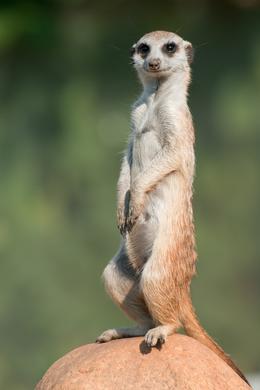
Meerkats, also called suricates, have the long
body and short legs characteristic of most
mongooses. The body length is from ten to thirteen
inches, and the tail adds an additional seven
to nine inches in length. The short fur of the
meerkat is grayish-brown to light gray in color,
featuring dark stripes across the back. The eyes
and nose are dark and form a contrast with the
light-colored head and throat. The belly fur of the
meerkat is rather thin, which helps to regulate the
animal's body temperature. To warm up, the animal
will bask in the sun while sitting up or lie
belly-down on warm earth, and to relieve itself
from the hot desert sun, a meerkat will lie bellydown
in a cool, shaded area or inside its burrow.
Meerkats are desert creatures, primarily inhabiting
the Kalahari and Namib deserts and other
dry, open areas of southern Africa. One of the
most notable characteristics of meerkats is their
extreme gregariousness. They typically live in
family units of up to thirty individuals. The colony
of animals occupies a home territory, and digs
several systems of burrows with multiple entrances
connected by tunnels and a number of distinct
chambers. The colony moves several times
during a year as food becomes depleted, and establishes
a new system of burrows or occupies
those left from a previous occupation by the
group.
Group Life
Because life in the open desert is harsh and predators,
such as jackals, hyenas, and birds of prey, are
plentiful, the meerkat group social structure ensures
that there are many individuals to act as
sentries while the group is foraging for food. The
sentry takes its place on a raised area such as a
sandbank, bush, or tree, and constantly scans the
sky and the horizon for potential predators. The
keen eyes and ears of meerkats aid in their constant
vigil against danger. Should a predator be
spotted, the sentry barks a warning and all members
rush to the protection of the burrows. When
larger animals, such as hyenas, have threatened
the safety of the meerkats inside the burrow, the
entire meerkat colony has been seen to band together,
stand on their hind legs, and confront the
intruder with barking threats, successfully repelling
the threatening advances of the much larger
animal.
The diet of meerkats consists largely of whatever
is available in the harsh desert habitat. Insects,
spiders, centipedes, scorpions, lizards,
snakes, small mammals, birds and their eggs,
roots, tubers, and other plant matter are all staples
of the meerkat diet. Each individual takes its turn
at sentry duty while the others forage, and the
sentry is changed about every thirty minutes.
Meerkats are diurnal creatures, spending much of
their time foraging for food during daylight
hours, except for the hottest portion of the day
when they rest in the shade.
Mating generally occurs between October and
April, and females give birth to two to five young
after a gestational period of about seventy-seven
days. Mothers give birth in a specific chamber in
the burrow and young are born blind, but their
eyes open in twelve to fourteen days. Meerkat
young begin eating solid food at about three or
four weeks of age but typically nurse for eight to
twelve weeks. In meerkat society, there are many
individuals who "babysit" young while the mothers
forage for food. Meerkat young are sexually
mature about one year after birth.
Meerkat Facts
Classification:
Kingdom: Animalia
Subkingdom: Bilateria
Phylum: Chordata
Subphylum: Vertebra
Class: Mammalia
Subclass: Eutheria
Order: Carnivora
Family: Viverridae
Genus and species: Suricata suricatta (gray meerkat)
Geographical location: Southwestern Angola to
southern Africa
Habitat: Desert, open country, savanna, and bush
Gestational period:Approximately eleven weeks
Life span: About ten years in the wild, up to seventeen
in captivity
Special anatomy: Long, stiff tails that are used to
stand upright; keen eyes located at the front of
their heads provide good depth of vision
Other popular Animals
Photo Gallery of - Meerkat

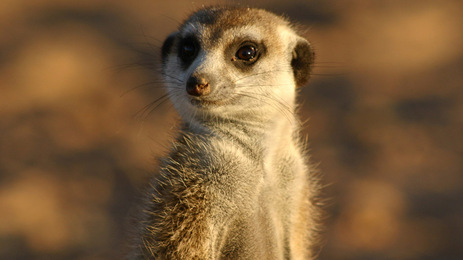
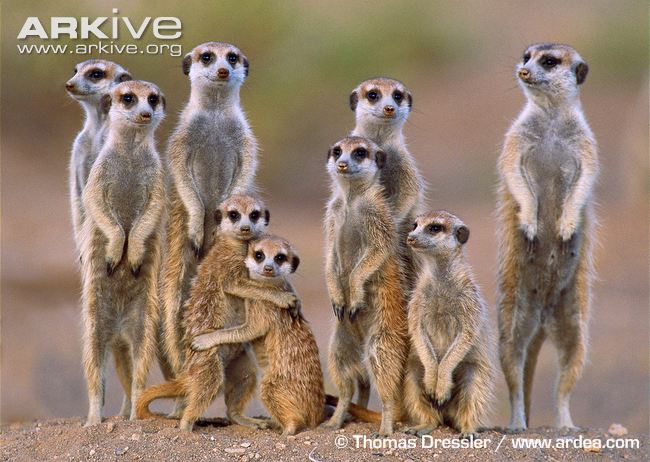
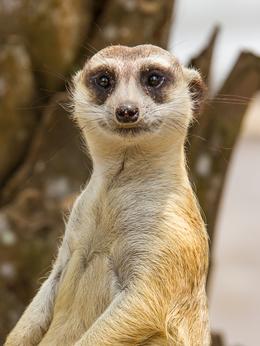


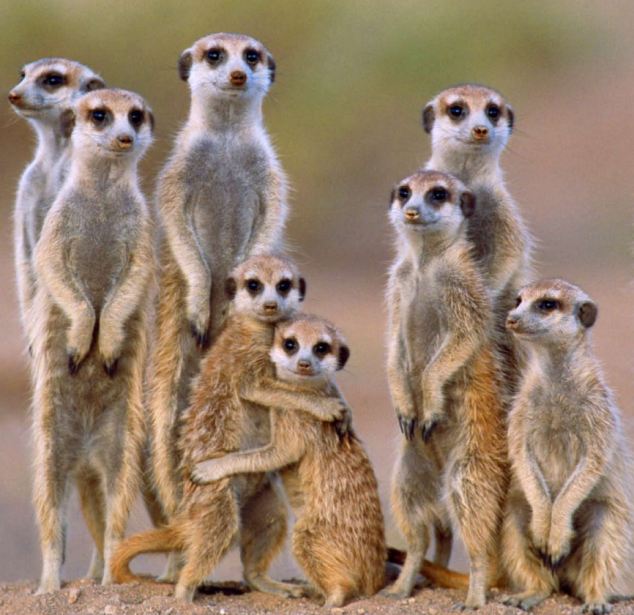

 Animalia Life
Animalia Life